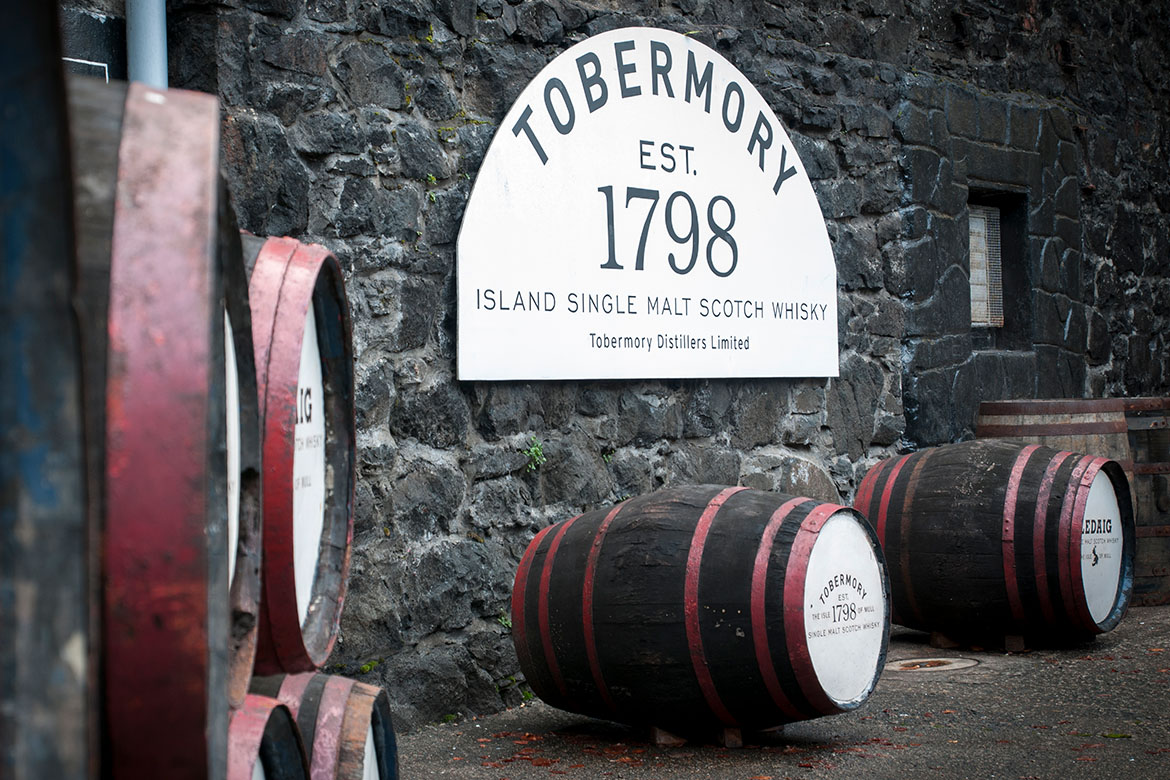Tobermory’s story
Tobermory is the only distillery on the large Hebridean island of Mull, which lies a short ferry ride from the west Highland coast of Scotland. It was founded in 1798, making it one of Scotland’s oldest distilleries and is named after the small town of Tobermory – the island’s capital. Tobermory is small and compact with an annual production capacity of just over one million litres and is currently owned by Distell.
The whisky produced at Tobermory is popular with blenders and until recently only around 15% of Tobermory’s whisky is released as single malt. However, this has changed since Distell took over in 2013 with an increasing range and presence on retail shelves. They produce three different styles of single malt whisky at Tobermory – the majority is produced using unpeated malted barley and is called Tobermory. There is also a peated version, which is sold as Ledaig (pronounced lay-chick) and a rare heavily peated version called Iona (named after a small island that neighbours Mull).
Tobermory’s history
Tobermory was founded in 1798 by John Sinclair. However, there were rumours of illegal distilling taking place in the area since the early 1700s due to its remote location. A legal distillery was built to support the fishing community that had built up in Tobermory, as it became a major harbour on Scotland’s west coast.
The history of the distillery is littered with periods of closure and numerous changes of ownership for one reason or another. The two most significant and longest closures were 1837 to 1878 and then 1930 to 1972. Upon reopening in 1972 the distillery was know as Ledaig, meaning ‘safe harbour’ in the local Gaelic dialect. Interestingly, during World War II the disused distillery buildings were converted into a canteen for marines stationed at the nearby Tobermory naval base.
Following another sporadic period of production in the early to mid-1970s, the Tobermory Distillers Ltd. was set up in 1979. They changed the distillery’s name back from Ledaig to Tobermory. However, they were soon in financial trouble too and sold off some of the outbuildings and warehouses to developers and these were converted to apartments. Some of these buildings were also used by a local cheese company to mature their cheddar.
Burn Stewart took control in 1993, buying the distillery and all the old maturing whisky stock and Tobermory has been in constant production ever since, bar a two-year period of renovation between 2017 and 2019. Distell International purchased Burn Stewart in 2013 and have overseen the massive growth in popularity of Tobermory single malt.
- How to pronounce Tobermory? toe-bur-moor-ray
- Country: Scotland
- Region: Islands – Mull
- Founded: 1798
- Current owners: Distell International
- Production capacity per year: 1.2 million litres
- Mash tun: 7.5 ton stainless steel
- Washbacks: 4
- Stills: 4
- Visitor centre: Yes
Tobermory Distillery
Isle of Mull
PA75 6NR
tel – +44(0)1688 302647
tobermorydistillery.com
Did you know?
A Spanish galleon shipwreck can be found at the bottom of Tobermory harbour, over which the distillery looks. It was named ‘The Florida’ and was sunk during the Spanish Armada in 1588. Legend has it that it was loaded with treasure but none has ever been ‘officially’ recovered …
Tobermory





